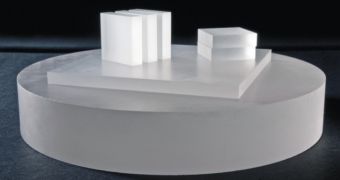Rather than causing sapphire prices to go down, Apple’s intentions to use it in its upcoming iPhone 6 is actually driving sapphire manufacturing costs up, according to Taiwanese researchers.
Digitimes Research reveals, via its own Taiwan-based publication, that “Prices of 2-inch sapphire ingots are expected to hike 11% sequentially and 43% on year to US$5(€3.62)/mm in the second quarter of 2014 after surging at an annual rate of 61% to US$4.5(€3.26)//mm in the first quarter.”
The numbers are for people who usually take interest in financial news, but here’s something for the rest of the world (emphasis ours).
“The upsurge of sapphire ingot prices comes amid recent market speculation indicating that Apple, as well as a number of China-based handset vendors, are considering using sapphire glass as cover glass for their high-end smartphones, said industry sources.”
Normally, when a certain product or technology becomes more abundant, the price of obtaining that product/technology goes down. Apparently that’s not the case when a certain California company announces plans to use it.
Sapphire makers thus found an opportunity to capitalize on the hype and actually increase the price-per-ingot. Not only that, but “major global sapphire ingot suppliers, including Taiwan-based USI Optronics (USIO), have been aggressively ramping their capacity,” having been encouraged by the rising prices, according to DigiTimes’ sources.
Sapphire will be used as the screen cover for Apple’s next-generation iPhone 6, according to multiple sources with a solid track record on Apple reporting. CEO Tim Cook himself confirmed the company’s plans to employ large amounts of sapphire for upcoming products, but he declined to mention what those products were.
Company watchers also believe Apple wants to put sapphire in its rumored iWatch, a smart-watch capable of reading the user’s physiology from head to toe, via a combination of smart sensors that take readings from the user’s wrist.
Sapphire has a number of characteristics that make it vastly superior even to Corning’s Gorilla Glass. Although there’s a debate regarding whose glass is better, sapphire is much more scratch-resistant, which theoretically means it is far less prone to getting cracked on impact with a solid surface.
Corning has argued that sapphire production is costly and environmentally unfriendly, suggesting that all smarphone makers jumping on the sapphire bandwagon this year are making a mistake. The American glass maker also says that sapphire is less transparent to light than its own Gorilla Glass.

 14 DAY TRIAL //
14 DAY TRIAL //